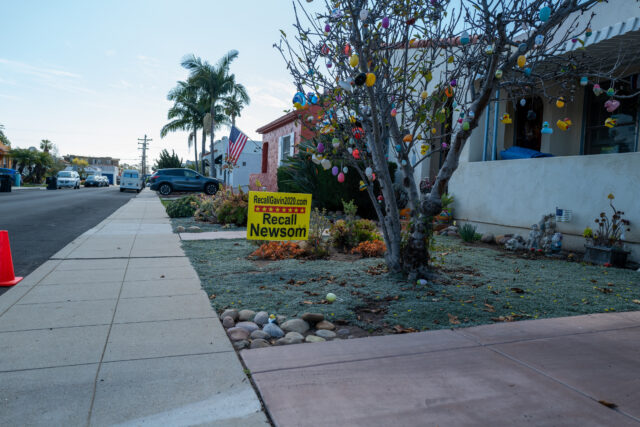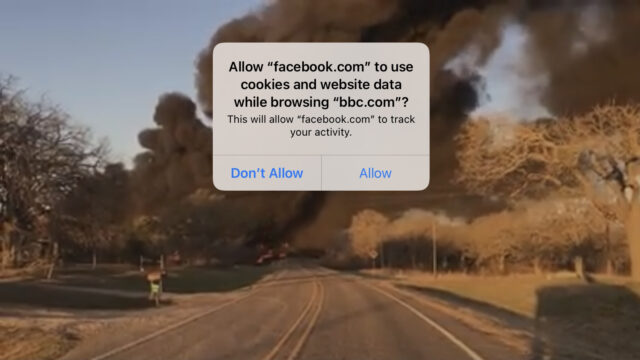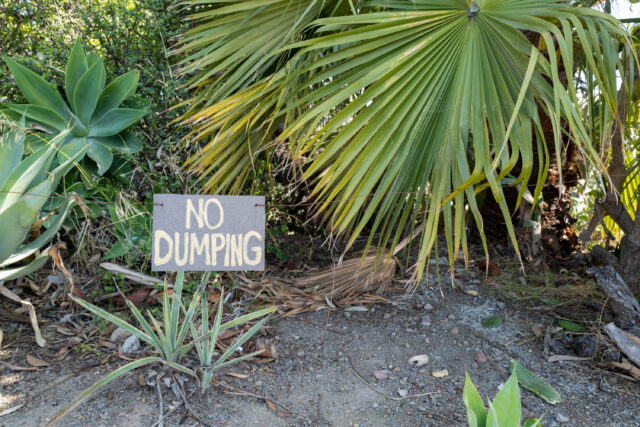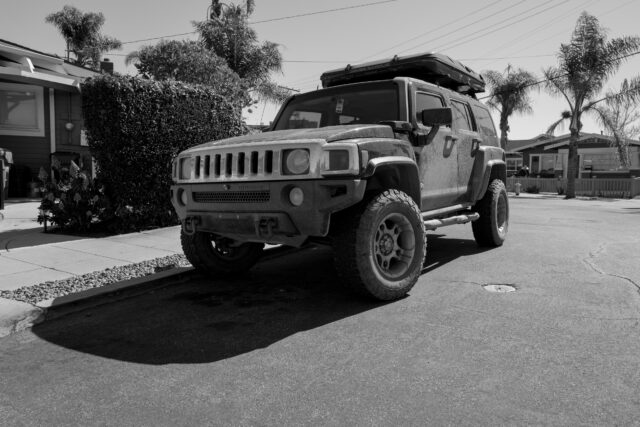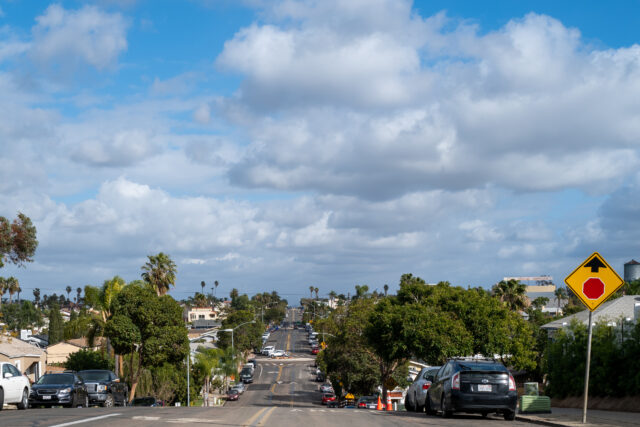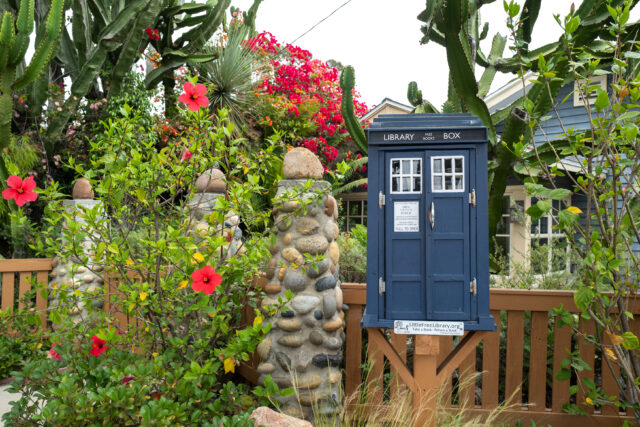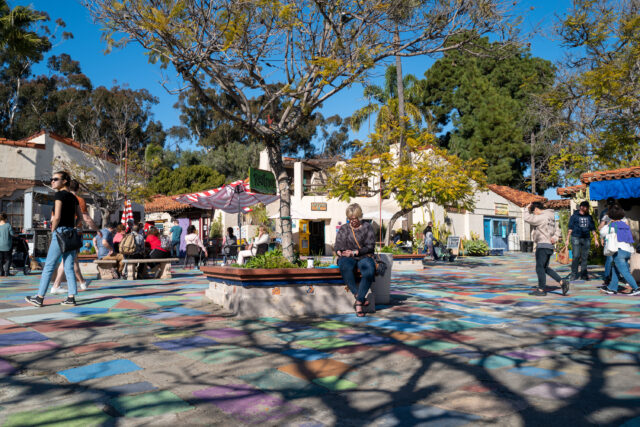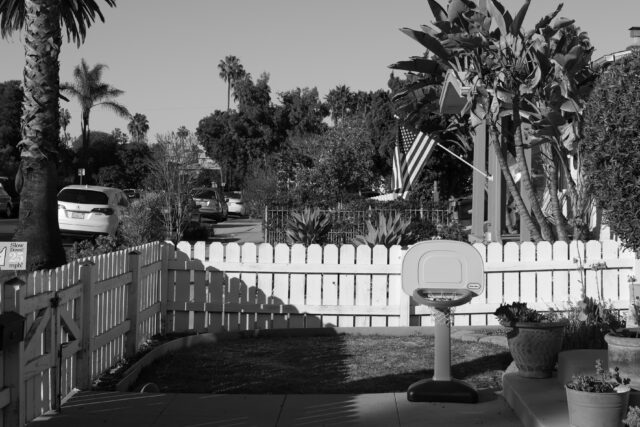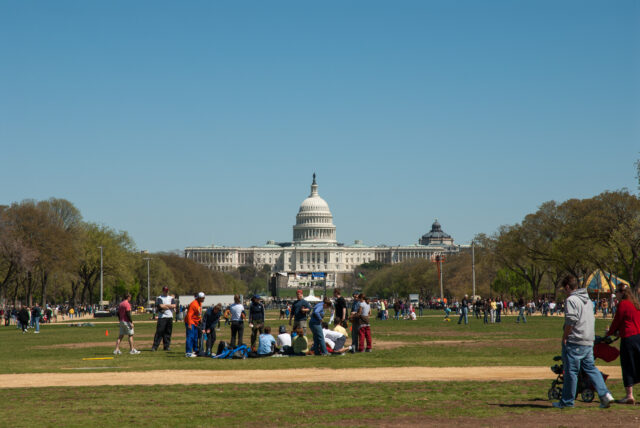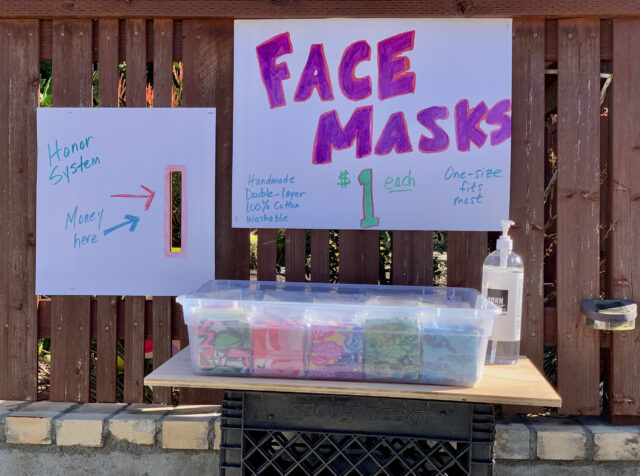Some things go so oddly together that you must stop and regard them and wonder. Today, while walking along Shirley Ann Place in San Diego’s University Heights neighborhood, a “Recall Newsom” sign surprised me; it’s the first one seen anywhere here. My wife fixated on the Easter eggs hanging from a tree in the same yard. She missed the one thing, and I the other. Mmmm, what does that say about selective vision and being drawn to what interests you while having a blindspot for what doesn’t?
As strangely as the cheerful eggs and hopeful sign are juxtaposed, something else made the scene feel even more Twilight Zone-like: The house beyond with the American flag flew something different before the Presidential election: Old Glory with spray-painted BLM. Well, I couldn’t leave without photos, which were captured using Leica Q2. The Featured Image (warning: 27MB file), which is composed as shot, shows the street. The cropped companion brings together the three elements. Vitals, aperture manually set for both: f/5.6, ISO 100, 1/200 sec, 28mm; 12:25 p.m. PST. The other is f/2.8 and 1/640 sec.
